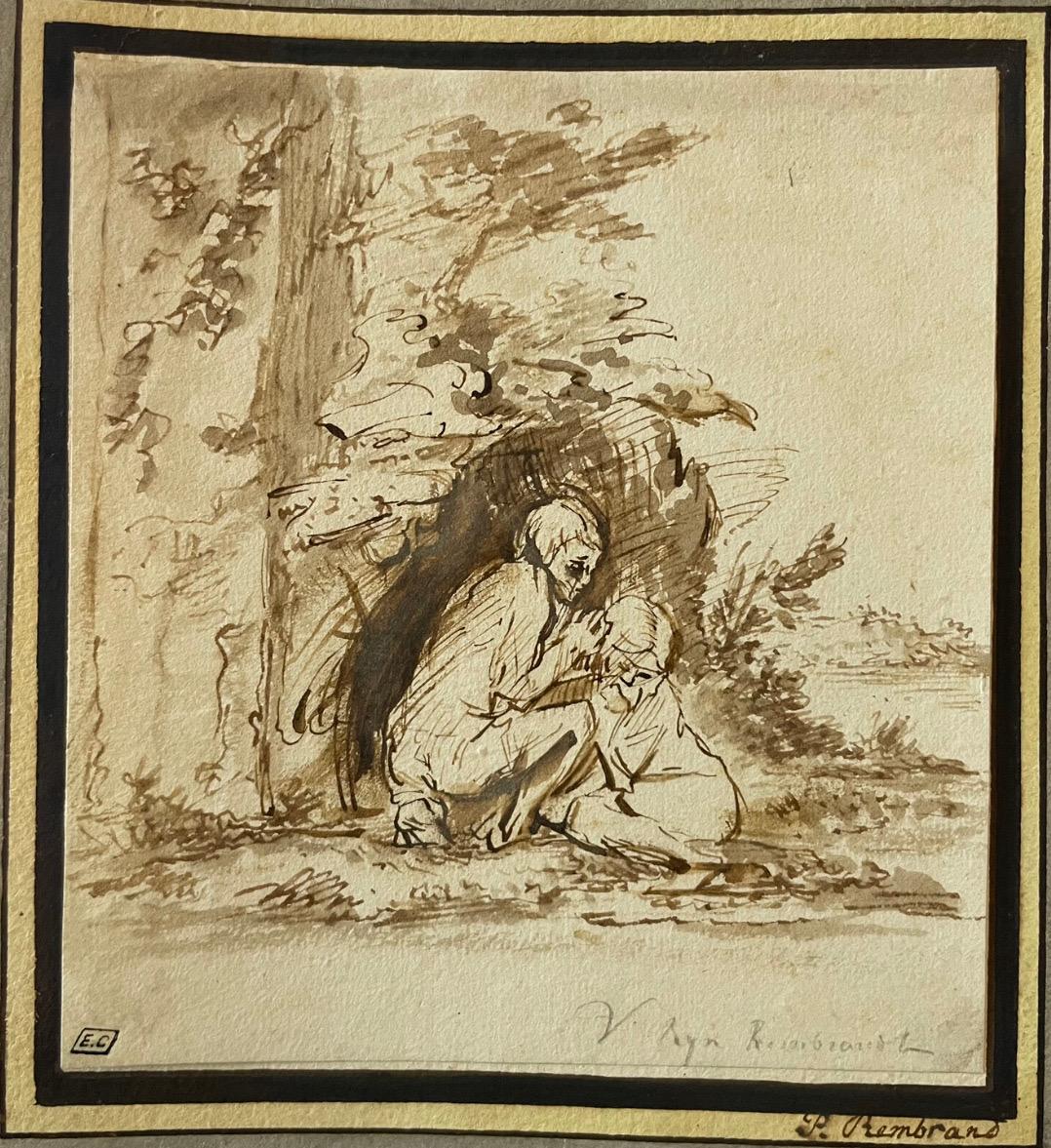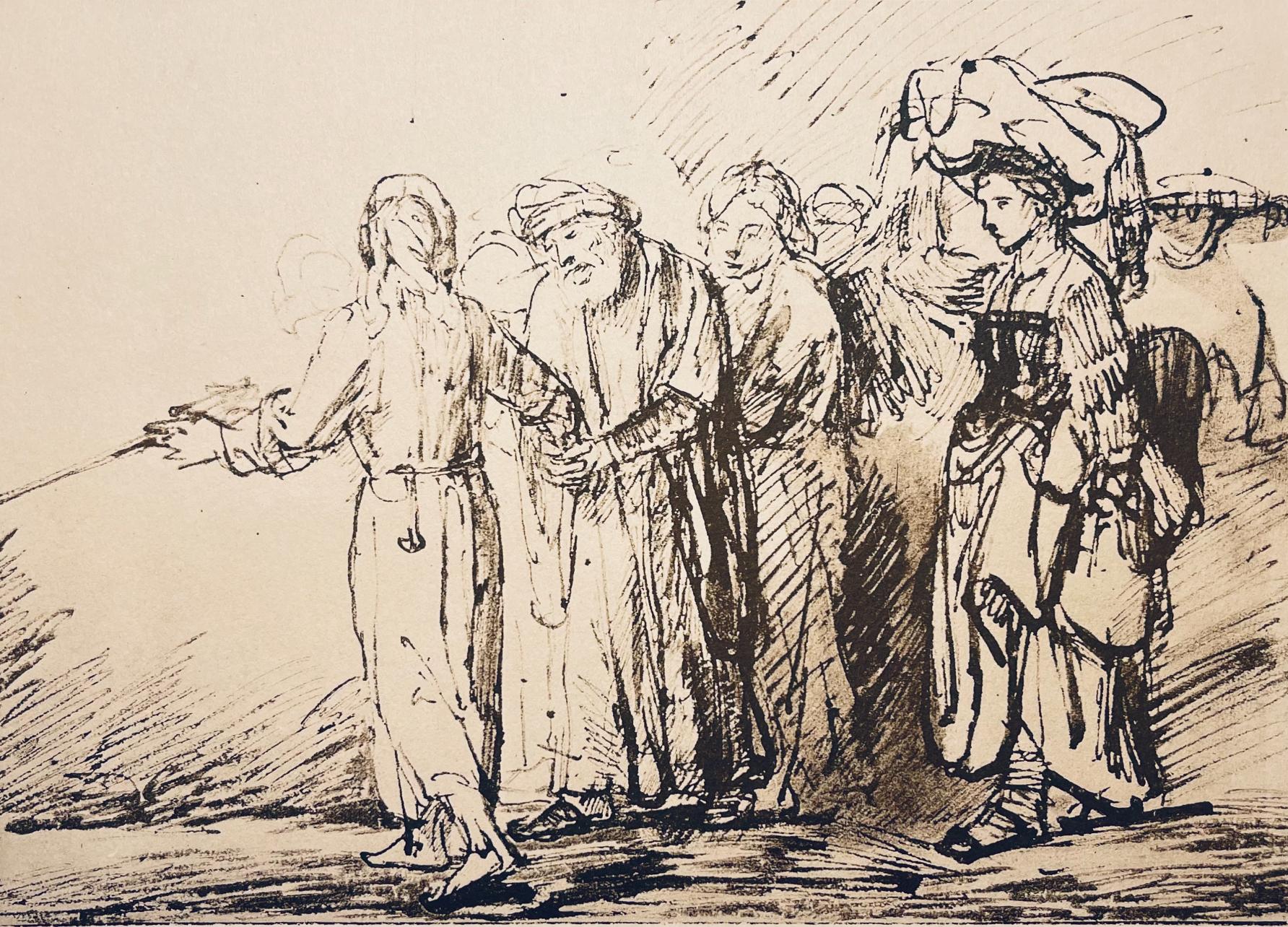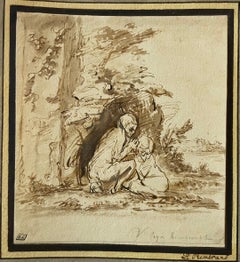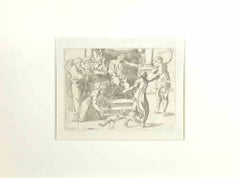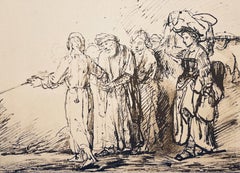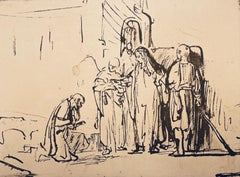Items Similar to 1600’s Flemish Old Master Ink Wash Drawing Biblical Figures Group on paper
Want more images or videos?
Request additional images or videos from the seller
1 of 4
1600’s Flemish Old Master Ink Wash Drawing Biblical Figures Group on paper
$1,294.46
£945
€1,113.62
CA$1,778.67
A$1,990.66
CHF 1,038.97
MX$24,275.81
NOK 13,297.43
SEK 12,587.72
DKK 8,310.82
Shipping
Retrieving quote...The 1stDibs Promise:
Authenticity Guarantee,
Money-Back Guarantee,
24-Hour Cancellation
About the Item
Figure Studies
Attriubted to Cornelis Schut
(1597 - 1655) Flemish
ink drawing on paper, inscribed on mount
size: 4.75 x 7 inches
private collection, France
The painting is in overall very good and sound condition
- Attributed to:Cornelis Schut (Flemish)
- Dimensions:Height: 4.75 in (12.07 cm)Width: 7 in (17.78 cm)
- Medium:
- Movement & Style:
- Period:Early 17th Century
- Condition:
- Gallery Location:Cirencester, GB
- Reference Number:1stDibs: LU509312163572

About the Seller
5.0
Platinum Seller
Premium sellers with a 4.7+ rating and 24-hour response times
Established in 1989
1stDibs seller since 2016
4,611 sales on 1stDibs
Typical response time: 1 hour
- ShippingRetrieving quote...Shipping from: Cirencester, United Kingdom
- Return Policy
Authenticity Guarantee
In the unlikely event there’s an issue with an item’s authenticity, contact us within 1 year for a full refund. DetailsMoney-Back Guarantee
If your item is not as described, is damaged in transit, or does not arrive, contact us within 7 days for a full refund. Details24-Hour Cancellation
You have a 24-hour grace period in which to reconsider your purchase, with no questions asked.Vetted Professional Sellers
Our world-class sellers must adhere to strict standards for service and quality, maintaining the integrity of our listings.Price-Match Guarantee
If you find that a seller listed the same item for a lower price elsewhere, we’ll match it.Trusted Global Delivery
Our best-in-class carrier network provides specialized shipping options worldwide, including custom delivery.More From This Seller
View AllFine 1700's Italian Old Master Ink & Wash Drawing Roman Allegorical Providenza
Located in Cirencester, Gloucestershire
'Providenza'
Italian School, 18th century
ink and wash drawing on paper, framed within a light oak wood frame (behind glass)
image size: 10.5 x 7 inches
overall framed: 17 x 13 inche...
Category
18th Century Old Masters Figurative Paintings
Materials
Ink, Watercolor, Archival Paper
Fine 1700's Italian Old Master Ink & Wash Drawing Roman Allegorical Magnaminita
Located in Cirencester, Gloucestershire
'Mgnaminia'
Italian School, 18th century
ink and wash drawing on paper, framed within a light oak wood frame (behind glass)
image size: 10.5 x 7 inches
overall framed: 17 x 13 inches...
Category
18th Century Old Masters Figurative Paintings
Materials
Ink, Watercolor, Archival Paper
17th C Dutch Old Master Ink & Wash Painting Biblical Figures Rembrandt Pupil
Located in Cirencester, Gloucestershire
Figure being Comforted (Job?)
circle of Willem Drost (Dutch 1633-1659) *See notes below
ink and wash drawing on paper (Arms of Amsterdam watermarked)
Dutc...
Category
Mid-17th Century Old Masters Figurative Drawings and Watercolors
Materials
Ink, Watercolor
Fine 1700's Italian Old Master Ink & Wash Drawing Roman Allegorical Africa
Located in Cirencester, Gloucestershire
'Africa'
Italian School, 18th century
ink and wash drawing on paper, framed within a light oak wood frame (behind glass)
image size: 10.5 x 7 inches
overall framed: 17 x 13 inches
co...
Category
18th Century Old Masters Figurative Paintings
Materials
Ink, Watercolor, Archival Paper
Italian Old Master Ink & Wash Drawing St. Anne & The Virgin Mary with Cherubs
Located in Cirencester, Gloucestershire
Pietro Fancelli (Italian 1764 - 1850)
bio details attached to the frame
'St. Anne & The Virgin'
ink with watercolor wash on paper, framed
framed: 22 x 16 inches
image: 11 x 6.5 inche...
Category
Late 18th Century Old Masters Figurative Drawings and Watercolors
Materials
Ink, Watercolor
Fine 1700's Italian Old Master Ink & Wash Drawing Roman Allegorical Napoli
Located in Cirencester, Gloucestershire
'Napoli'
Italian School, 18th century
ink and wash drawing on paper, framed within a light oak wood frame (behind glass)
image size: 10.5 x 7 inches
overall framed: 17 x 13 inches
co...
Category
18th Century Old Masters Figurative Paintings
Materials
Ink, Watercolor, Archival Paper
You May Also Like
Old Testament Story - Etching by Giovanni Lanfranco - 1607s
Located in Roma, IT
Old Testament Story is an Etching print realized by the artist Giovanni Lanfranco after Agostino Carracci
About The Old Testament Story, 1607 ca.
...
Category
Early 1600s Old Masters Figurative Prints
Materials
Etching
Rembrandt, Composition, Rembrandt, Drawings from the Bible (after)
By Rembrandt van Rijn
Located in Fairfield, CT
Medium: Lithograph on vélin Hamilton Kilmory paper
Year: 1947
Paper Size: 12.5 x 9.5 inches
Inscription: Unsigned and unnumbered, as issued
Notes: From the folio, Rembrandt, Drawings...
Category
1940s Baroque Figurative Prints
Materials
Lithograph
$716 Sale Price
20% Off
Rembrandt, Composition, Rembrandt, Drawings from the Bible (after)
By Rembrandt van Rijn
Located in Fairfield, CT
Medium: Lithograph on vélin Hamilton Kilmory paper
Year: 1947
Paper Size: 9.5 x 12.5 inches
Inscription: Unsigned and unnumbered, as issued
Notes: From the folio, Rembrandt, Drawings...
Category
1940s Baroque Figurative Prints
Materials
Lithograph
$716 Sale Price
20% Off
Rembrandt, Composition, Rembrandt, Drawings from the Bible (after)
By Rembrandt van Rijn
Located in Fairfield, CT
Medium: Lithograph on vélin Hamilton Kilmory paper
Year: 1947
Paper Size: 9.5 x 12.5 inches
Inscription: Unsigned and unnumbered, as issued
Notes: From the folio, Rembrandt, Drawings...
Category
1940s Baroque Figurative Prints
Materials
Lithograph
$716 Sale Price
20% Off
Sacred Scene - Original Etching after Pietro Testa - Early 18th Century
By Pietro Testa
Located in Roma, IT
Sacred Scene is an original etching on paper, realized by an anonymous artist after Pietro Testa in the early 18th Century.
Hand-signed on the lower righ...
Category
Early 18th Century Old Masters Figurative Prints
Materials
Etching
Matthei 2 - Old Testament Story - Etching by Giovanni Lanfranco - 1607
Located in Roma, IT
Matthei 2 -Old Testament Story is an Etching print realized by the artist Giovanni Lanfranco.
About The Old Testament Story, 1607 ca.
Passpartout ...
Category
Early 1600s Old Masters Figurative Prints
Materials
Etching
More Ways To Browse
Flemish Masters
Old Master Flemish
1600S Antique
Cornelis Schut
French Painting Young Girl
Spanish Old Master Paintings
Confused Paintings
Paintings Old Boy
Russian Palace
British Genre Paintings
Social Commentary Paintings
African Hand Painted Signs
Go Car
1960 Spanish Oil Paintings
Dollar Bill Art
Oil Painting Mythological
Red Lips Art
Old Religious Painting
